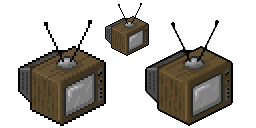Computer vision is an interdisciplinary scientific field that deals with how computers can gain high-level understanding from digital images or videos. From the perspective of engineering, it seeks to understand and automate tasks that the human visual system can do.
In signal processing, data compression, source coding, or bit-rate reduction is the process of encoding information using fewer bits than the original representation. Any particular compression is either lossy or lossless. Lossless compression reduces bits by identifying and eliminating statistical redundancy. No information is lost in lossless compression. Lossy compression reduces bits by removing unnecessary or less important information. Typically, a device that performs data compression is referred to as an encoder, and one that performs the reversal of the process (decompression) as a decoder.

In the mathematical field of numerical analysis, interpolation is a type of estimation, a method of constructing (finding) new data points based on the range of a discrete set of known data points.

Signal processing is an electrical engineering subfield that focuses on analysing, modifying, and synthesizing signals such as sound, images, and scientific measurements. Signal processing techniques can be used to improve transmission, storage efficiency and subjective quality and to also emphasize or detect components of interest in a measured signal.

Motion compensation is an algorithmic technique used to predict a frame in a video, given the previous and/or future frames by accounting for motion of the camera and/or objects in the video. It is employed in the encoding of video data for video compression, for example in the generation of MPEG-2 files. Motion compensation describes a picture in terms of the transformation of a reference picture to the current picture. The reference picture may be previous in time or even from the future. When images can be accurately synthesized from previously transmitted/stored images, the compression efficiency can be improved.

A compression artifact is a noticeable distortion of media caused by the application of lossy compression. Lossy data compression involves discarding some of the media's data so that it becomes small enough to be stored within the desired disk space or transmitted (streamed) within the available bandwidth. If the compressor cannot store enough data in the compressed version, the result is a loss of quality, or introduction of artifacts. The compression algorithm may not be intelligent enough to discriminate between distortions of little subjective importance and those objectionable to the user.
A frame is often a structural system that supports other components of a physical construction and/or steel frame that limits the construction's extent.

In mathematics, a time series is a series of data points indexed in time order. Most commonly, a time series is a sequence taken at successive equally spaced points in time. Thus it is a sequence of discrete-time data. Examples of time series are heights of ocean tides, counts of sunspots, and the daily closing value of the Dow Jones Industrial Average.
Scale-space theory is a framework for multi-scale signal representation developed by the computer vision, image processing and signal processing communities with complementary motivations from physics and biological vision. It is a formal theory for handling image structures at different scales, by representing an image as a one-parameter family of smoothed images, the scale-space representation, parametrized by the size of the smoothing kernel used for suppressing fine-scale structures. The parameter in this family is referred to as the scale parameter, with the interpretation that image structures of spatial size smaller than about have largely been smoothed away in the scale-space level at scale .

Image stitching or photo stitching is the process of combining multiple photographic images with overlapping fields of view to produce a segmented panorama or high-resolution image. Commonly performed through the use of computer software, most approaches to image stitching require nearly exact overlaps between images and identical exposures to produce seamless results, although some stitching algorithms actually benefit from differently exposed images by doing high-dynamic-range imaging in regions of overlap. Some digital cameras can stitch their photos internally.

In computer graphics and digital imaging, imagescaling refers to the resizing of a digital image. In video technology, the magnification of digital material is known as upscaling or resolution enhancement.
Marching squares is a computer graphics algorithm that generates contours for a two-dimensional scalar field. A similar method can be used to contour 2D triangle meshes.
Sample-rate conversion is the process of changing the sampling rate of a discrete signal to obtain a new discrete representation of the underlying continuous signal. Application areas include image scaling and audio/visual systems, where different sampling rates may be used for engineering, economic, or historical reasons.
Television standards conversion is the process of changing a television transmission or recording from one television system to another. The most common is from NTSC to PAL or the other way around. This is done so television programs in one nation may be viewed in a nation with a different standard. The video is fed through a video standards converter, which makes a copy in a different video system.

Motion interpolation or motion-compensated frame interpolation (MCFI) is a form of video processing in which intermediate animation frames are generated between existing ones by means of interpolation, in an attempt to make animation more fluid, to compensate for display motion blur, and for fake slow motion effects.
The Apple Intermediate Codec is a high-quality 8-bit 4:2:0 video codec used mainly as a less processor-intensive way of working with long-GOP MPEG-2 footage such as HDV. It is recommended for use with all HD workflows in Final Cut Express, iMovie, and until Final Cut Pro version 5. The Apple Intermediate Codec abbreviated AIC is designed by Apple Inc. to be an intermediate format in an HDV and AVCHD workflow. It features high performance and quality, being less processor intensive to work with than other editing formats. Unlike native MPEG-2 based HDV - and similar to the standard-definition DV codec - the Apple Intermediate Codec does not use temporal compression, enabling every frame to be decoded immediately without decoding other frames. As a result of this, the Apple Intermediate Codec takes three to four times more space than HDV.
Ahmed I. Zayed is an Egyptian American mathematician. His research interestes include Sampling Theory, Wavelets, Medical Imaging, Fractional Fourier transform,Sinc Approximations, Boundary Value Problems, Special Functions and Orthogonal polynomials, Integral transforms.
This is a glossary of terms relating to computer graphics.







